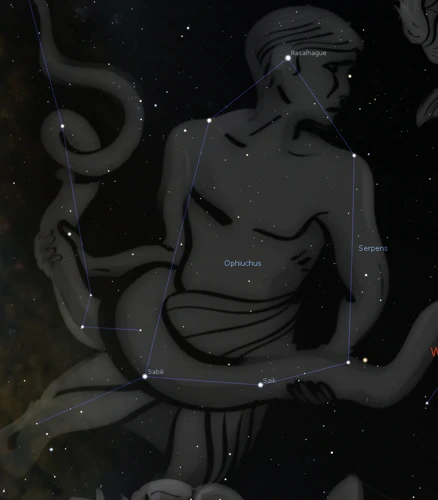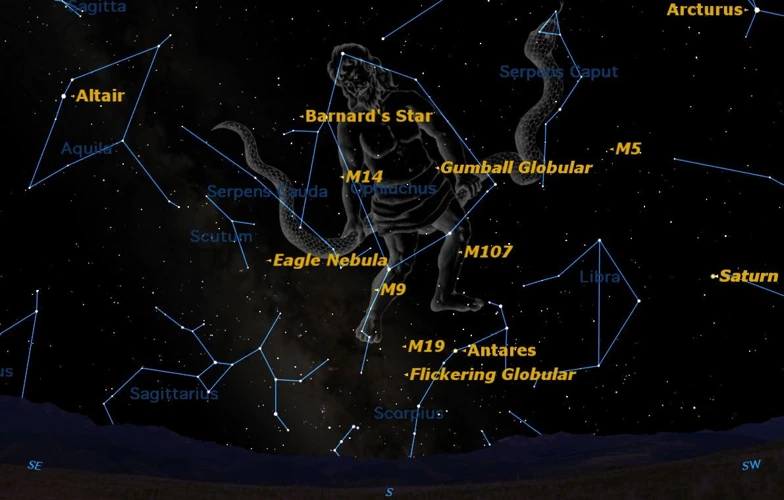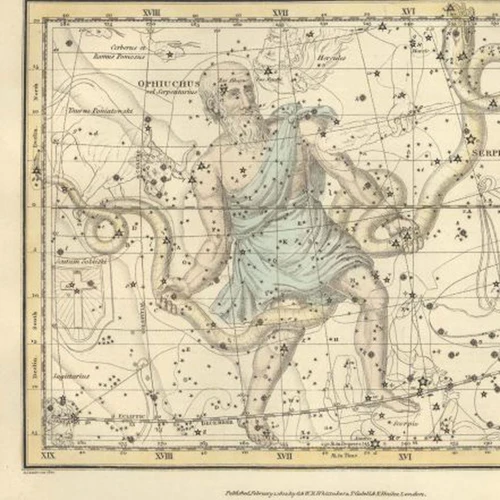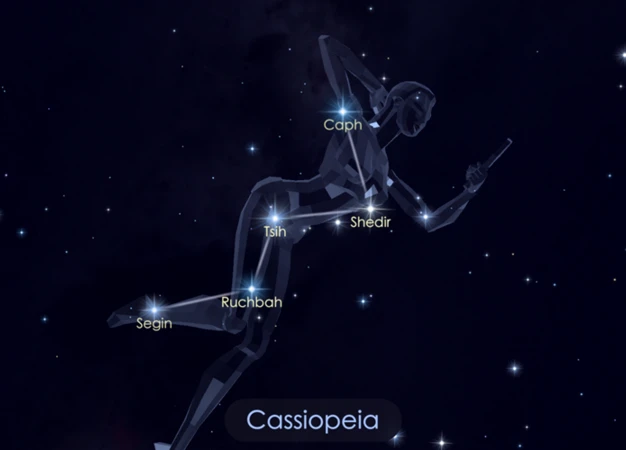The Mythology Behind Cassiopeia: A Queen in the Northern Constellations
Have you ever gazed up at the night sky and wondered about the stories behind the constellations? One such constellation that has captured the imagination of astronomers and storytellers alike is Cassiopeia, the queen in the northern constellations. This captivating figure is steeped in mythology, with tales of hubris, divine punishment, and transformation into a celestial entity. But Cassiopeia is more than just a mythical character; it carries symbolism and interpretations that reflect on beauty, power, femininity, and lessons in humility and redemption. Join us on a journey as we delve into the rich cultural depictions and legends surrounding Cassiopeia, as well as uncover scientific facts about this celestial marvel. Get ready to explore the enchanting mythology behind Cassiopeia and discover the captivating stories woven into the starry tapestry of the night sky.
The Story of Cassiopeia

In the mythological tale of Cassiopeia, the queen’s story unfolds with a mix of pride and consequences. Once known for her beauty, Cassiopeia’s vanity led her to boast that she surpassed even the sea nymphs in allure. This audacious claim angered Poseidon, the god of the sea, who sought retribution for such hubris. As punishment, Poseidon unleashed a sea monster to ravage the kingdom. In a desperate bid to save her people, Cassiopeia was forced to sacrifice her own daughter, Andromeda, to appease the wrathful deity. This tragic turn of events serves as a cautionary tale about the perils of arrogance and the far-reaching effects of one’s actions. Ultimately, Cassiopeia’s story reminds us of the importance of humility and the potential for redemption, as her transformation into a constellation serves as a lasting reminder of her journey through the cosmos.
1. The Queen’s Hubris
In the story of Cassiopeia, the queen’s hubris takes center stage. Cassiopeia was renowned for her unparalleled beauty, and her arrogance knew no bounds. She believed herself to be superior to even the sea nymphs, known for their enchanting allure. This audacious claim not only showcased Cassiopeia’s excessive pride but also invoked the ire of the powerful god of the sea, Poseidon. With her proclamation, Cassiopeia had crossed a line, daring to challenge the beauty of divine creatures. This act of hubris would prove to be her downfall, as it summoned the wrath of Poseidon and set into motion a series of tragic events that would forever change her life and those around her. The tale of Cassiopeia’s hubris reminds us of the dangers of unchecked vanity and the consequences that can arise from overestimating one’s own worth. It serves as a cautionary tale, teaching us the importance of humility and the potential repercussions of allowing our pride to cloud our judgment and actions.
2. Divine Punishment
In the enthralling myth of Cassiopeia, her divine punishment unfolds with devastating consequences. It all began when Cassiopeia, consumed by her own vanity, boasted that she was more beautiful than the sea nymphs. This brazen claim outraged Poseidon, the god of the sea, who saw it as an affront to the natural order of beauty. Seeking retribution for her hubris, Poseidon cursed Cassiopeia and her kingdom, unleashing a monstrous sea creature upon their shores. This fearsome creature threatened to bring destruction and chaos unless appeased. Desperate to save her people, Cassiopeia had no choice but to sacrifice her own daughter, Andromeda, to the merciless beast. The anguish and sorrow that Cassiopeia endured in this act of sacrifice stand as a testament to the consequences of arrogance and pride. This section of Cassiopeia’s story offers a cautionary tale about the dangers of overestimating one’s worth and serves as a stark reminder of the far-reaching effects that arrogance can have on both individuals and entire communities.
If you’d like to learn more about Andromeda’s courageous journey and the heroic constellation of Perseus, you can read our article on Perseus and Andromeda: Heroism in the Northern Constellations.
3. Transformation into a Constellation
The transformation of Cassiopeia into a constellation is a captivating part of her mythological tale. As a result of her actions and sacrifice, Cassiopeia was immortalized in the night sky, forever visible to humanity. In her celestial form, she is often depicted as a seated queen, her figure represented by a distinctive “W” or “M” shape of five bright stars. The constellation Cassiopeia is visible in the northern hemisphere and can be easily located during certain times of the year. Ancient civilizations, including the Greeks and Romans, recognized Cassiopeia as one of the prominent constellations in the heavens. The positioning of Cassiopeia is such that it appears to circle the North Star, Polaris, making it useful for navigation purposes. The tale of Cassiopeia serves as a reminder of the consequences of arrogance, with her immortal presence in the night sky serving as a cautionary symbol to all who witness it. To learn more about other fascinating constellations, such as the celestial twins in Gemini or the radiant beauty of Leo the divine lion, be sure to check out our articles on Gemini and Leo.
Symbolism and Interpretations

Cassiopeia, the mythical queen of the northern constellations, holds deep symbolism and offers multiple interpretations. This celestial figure represents both beauty and vanity, reminding us of the thin line between self-assuredness and excessive pride. Cassiopeia’s reflection on power and femininity underscores the complexities of gender roles and societal expectations. Her story also imparts valuable lessons in humility and redemption, serving as a reminder that one’s actions have consequences. The constellation of Cassiopeia invites us to explore the intricate relationship between myth, symbolism, and the human experience, encouraging introspection and contemplation. Whether admiring her radiant presence in the night sky or contemplating her allegorical significance, Cassiopeia invites us to delve deeper into the enigmatic realms of beauty, power, and personal growth.
1. Representation of Beauty and Vanity
Cassiopeia’s portrayal in mythology carries a significant representation of beauty and vanity. She was renowned for her breathtaking appearance, which she took pride in. Cassiopeia’s vain nature manifested in her daring claim that she surpassed even the sea nymphs in allure, a boast that incurred the wrath of Poseidon. This depiction emphasizes the importance of physical beauty in the ancient world and the dangers of excessive pride. The story of Cassiopeia serves as a cautionary tale, reminding us of the pitfalls of vanity and the destructive consequences it can bring. It prompts us to reflect on the superficial nature of beauty and the need for humility in the face of our own perceived attractiveness. The constellation of Cassiopeia itself is a visual reminder of the delicate balance between beauty and vanity, forever imprinted in the night sky as a celestial lesson for generations to come.
2. Reflections on Power and Femininity
In the compelling mythology of Cassiopeia, her story also offers profound reflections on power and femininity. The Queen’s position of authority and influence highlights the strength and resilience of women in leadership roles. Cassiopeia’s unyielding determination and unwavering belief in her own beauty demonstrate her assertion of power in a male-dominated world. This narrative challenges societal norms that often confine women to submissive roles and showcases the potential for women to wield power and make impactful decisions. Additionally, Cassiopeia’s story serves as a reminder of the complexities and nuances associated with femininity. Her character embodies both the regal beauty often associated with women and the flaws that can accompany such grace and charm. It encourages us to embrace the multifaceted nature of femininity and recognize that power comes in many forms. Cassiopeia’s tale invites us to reflect on the intersection of power and femininity and to challenge preconceived notions about the roles and capabilities of women.
3. Lessons in Humility and Redemption
In the rich tapestry of Cassiopeia’s mythology, the story of her transformation into a constellation serves as a profound lesson in humility and redemption. By gazing upon the starry figure of Cassiopeia, we are reminded of the consequences of arrogance and the potential for growth and redemption. This celestial queen’s journey from pride to remorse offers valuable insights into the human condition.
Cassiopeia’s punishment for her boastful claims serves as a powerful reminder that no one is above the divine order. It showcases the importance of recognizing our limitations and understanding that our actions have consequences. In this instance, Cassiopeia’s vanity led to the suffering and sacrifice of her own daughter, serving as a striking reminder of the unintended collateral damage caused by pride.
However, it is in this moment of despair that the path to redemption begins to unfold. Cassiopeia’s transformation into a constellation not only serves as a reminder of her past transgressions but also represents the opportunity for growth and self-reflection. As she gazes down from the heavens, her presence reminds us that redemption is possible, but only through a genuine change of heart and a willingness to confront one’s flaws.
The story of Cassiopeia teaches us that embracing humility is a vital step towards redemption. By acknowledging our mistakes and taking responsibility for our actions, we can begin the journey towards personal growth and transformation. It is through humility that we learn to be more compassionate, understanding, and empathetic towards others.
Cassiopeia’s tale also illustrates the power of forgiveness and second chances. Despite her initial pride, her story allows us to believe in the possibility of redemption and the capacity for change. It serves as a reminder that redemption is not only attainable but also essential for personal and spiritual growth.
In the vast expanse of the night sky, Cassiopeia stands as a guiding light, reminding us of the profound and transformative power of humility and redemption. As we gaze upon her celestial form, let us reflect on our own journey towards self-improvement, acknowledging our flaws, seeking forgiveness, and embracing the opportunity for personal growth and redemption.
Cultural Depictions and Legends

Cassiopeia’s significance extends beyond Greek mythology, as her image and tales have resonated with various cultures throughout history. In Greek mythology, Cassiopeia is often associated with the story of Andromeda and Perseus, showcasing heroism and the triumph of good over evil. However, other cultural interpretations have emerged as well. In Norse mythology, she is connected to the goddess Frigg, symbolizing femininity and motherhood. In Chinese mythology, Cassiopeia is part of the myth of the Weaver Girl and the Cowherd, represented by the stars Vega and Altair respectively, separated by the Milky Way. This celestial love story emphasizes the transient nature of love and the longing for reunion. These diverse cultural depictions and legends surrounding Cassiopeia highlight her enduring popularity and the universality of the human themes embedded within her mythical narrative.
1. Greek Mythology
Greek mythology provides the foundation for the captivating tales surrounding Cassiopeia. According to Greek lore, Cassiopeia was the wife of Cepheus, the king of Ethiopia. Her beauty was renowned and often compared to that of the sea nymphs, known as the Nereids. However, her vanity and arrogance led to her downfall.
In one version of the story, Cassiopeia claimed that her beauty surpassed that of the Nereids themselves, angering them and their father, Poseidon. As punishment for her boastfulness, Poseidon sent a sea monster to wreak havoc upon the kingdom. This forced Cassiopeia and Cepheus to seek assistance from the Oracle of Ammon, who advised them that the only way to appease Poseidon and save their kingdom was to sacrifice their daughter, Andromeda, to the sea monster.
Desperate to save her people, Cassiopeia reluctantly agreed to sacrifice her beloved daughter. However, Perseus, the hero of the constellation Perseus and Andromeda, arrived in time to rescue Andromeda and kill the sea monster. Though Cassiopeia’s actions were driven by her hubris, her willingness to sacrifice her daughter demonstrated her devotion to her kingdom and her people.
The story of Cassiopeia serves as a cautionary tale about the dangers of arrogance and the consequences that can arise from it. Her transformation into a constellation is a reminder of the lasting impact of her actions and the importance of humility. The Greek mythology surrounding Cassiopeia adds depth and meaning to this enchanting constellation in the northern sky.
2. Other Cultural Interpretations
Other cultures from around the world have their own unique interpretations of the Cassiopeia constellation. In Chinese mythology, the constellation is seen as the weaving maiden, represented by the star Zeta Cassiopeiae. According to Chinese folklore, the weaving maiden, known as Zhinü, falls in love with a cowherd, Niulang. They marry and have children but are separated by the Queen Mother of the Western Heaven. They are only allowed to meet once a year, on the seventh day of the seventh lunar month, when a bridge formed by magpies connects them. This tale portrays the deep love and longing between Zhinü and Niulang, and the celestial bridge represents the connection between the earthly and heavenly realms.
In Japanese mythology, the constellation is associated with the story of Orihime, the weaving princess, and Hikoboshi, the cowherd. Similar to the Chinese tale, the two fall in love but are separated by the Milky Way. They are only able to cross the river of stars and meet once a year, on the seventh day of the seventh lunar month, during the Tanabata festival. This festival celebrates the reunion of Orihime and Hikoboshi and is marked by the hanging of colorful paper decorations and the writing of wishes on strips of paper.
Native American tribes also have their own interpretations of Cassiopeia. The Algonquian tribes refer to the constellation as the “Stalk of Maize,” representing the growing corn plants in their agricultural traditions. The Iroquois tribes, on the other hand, see the constellation as the Council of Women, representing the power and wisdom of female leaders in their society.
These diverse cultural interpretations of the Cassiopeia constellation demonstrate the universal human fascination with the stars and the ways in which different societies have weaved their own unique stories and symbolism into the night sky. It is a reminder of the richness of human imagination and the connections we find in the celestial realm.
Scientific Facts about Cassiopeia
Cassiopeia, the queen in the northern constellations, not only holds a prominent place in mythology but also offers intriguing scientific facts for astronomers and stargazers. Positioned in the northern sky, Cassiopeia is easily recognizable for its distinctive “W” or “M” shape, depending on its orientation in the night sky. This pattern is a result of the constellation’s five brightest stars, forming an asterism known as the “W-shaped Cassiopeia.” Casiopeiae, commonly referred to as “Caph,” is the brightest star in Cassiopeia. It is a type F2 giant star and can be seen without the aid of a telescope. Another notable star within the constellation is Eta Cassiopeiae, a young star surrounded by a disk of dust and gas, indicating the possibility of planetary formation. Additionally, Cassiopeia is home to several deep-sky objects, such as the open star clusters M52 and NGC 457, which are captivating celestial treasures. Within the boundaries of Cassiopeia, the famous supernova remnant known as the Cassiopeia A can be found. It is the result of a massive star explosion that occurred approximately 11,000 light-years away. These scientific facts about Cassiopeia not only enhance our understanding of the universe but also contribute to the allure and fascination surrounding this extraordinary constellation.
Conclusion
The mythology behind Cassiopeia, the queen in the northern constellations, is a captivating tale that weaves together themes of beauty, vanity, power, and redemption. Through the story of Cassiopeia’s hubris and subsequent divine punishment, we are reminded of the consequences that can arise from arrogance and the importance of humility. The transformation of Cassiopeia into a constellation serves as a lasting symbol in the night sky, carrying the lessons of her journey through the cosmos. But Cassiopeia’s significance goes beyond mythology; it also represents the complexities of femininity and the roles that women have played in various cultures. Across different civilizations, she has been interpreted as a reflection of beauty and vanity, and as a symbol of power and femininity. Throughout history, Cassiopeia’s story has been depicted in artwork, literature, and folklore, showcasing the enduring impact of this celestial figure. From Greek mythology to other cultural interpretations, Cassiopeia’s presence is a testament to the human fascination with the stars and the stories we create to explain their existence. Scientifically, Cassiopeia is an important constellation in the northern sky, with its distinct W or M shape and various stars and deep-sky objects. It serves as a guidepost for celestial navigation and a source of awe and wonder for astronomers and stargazers alike. In conclusion, Cassiopeia’s mythology offers us insight into the depths of human nature, the consequences of our actions, and the potential for redemption. It reminds us of the power of storytelling and the enduring significance of celestial bodies in our lives. So the next time you gaze up at the night sky, take a moment to reflect on the mythology behind Cassiopeia, and let its lessons and symbolism inspire you.
Frequently Asked Questions
1. How did Cassiopeia become a constellation?
Cassiopeia became a constellation as a result of her transformation by the gods. After her hubris and the tragic events that unfolded, she was placed among the stars as a form of everlasting punishment and reminder of her actions.
2. Why was Cassiopeia punished by Poseidon?
Cassiopeia was punished by Poseidon for her boastful claim that she and her daughter, Andromeda, were more beautiful than the sea nymphs. This arrogant statement angered the sea god, who sent a sea monster to terrorize her kingdom.
3. What is the symbolic meaning behind Cassiopeia’s constellation?
Cassiopeia’s constellation symbolizes beauty, vanity, power, femininity, humility, and redemption. It serves as a reminder of the consequences of arrogance and the importance of learning from one’s mistakes.
4. Is Cassiopeia visible all year round?
Yes, Cassiopeia is a circumpolar constellation, which means it is visible in the northern hemisphere throughout the year. Its position in the northern sky allows for its visibility during all seasons.
5. What are some other cultural interpretations of Cassiopeia?
In addition to Greek mythology, Cassiopeia has been interpreted differently in various cultures. For example, in Chinese astronomy, the constellation is associated with the legend of Niulang and Zhinü, the Cowherd and Weaver Girl.
6. How many stars make up the Cassiopeia constellation?
The Cassiopeia constellation is composed of several bright stars, including five main stars that form the recognizable W or M shape. However, the constellation contains many more stars within its boundaries.
7. Can Cassiopeia be seen from the southern hemisphere?
No, Cassiopeia is primarily visible from the northern hemisphere. Due to its position in the northern sky, it is difficult to see the constellation from southern latitudes.
8. What is the best time to observe Cassiopeia in the night sky?
Cassiopeia is most visible during the autumn and winter months in the northern hemisphere. It can be observed in the evening sky around midnight during these seasons.
9. Is Cassiopeia a part of any larger constellation grouping?
Yes, Cassiopeia is part of the Perseus family of constellations, which includes other notable constellations such as Perseus and Andromeda.
10. Can Cassiopeia be used for celestial navigation?
Yes, Cassiopeia is a well-known and easily recognizable constellation, making it useful for celestial navigation. Its distinct shape and position in the sky can help determine direction and orientation.








